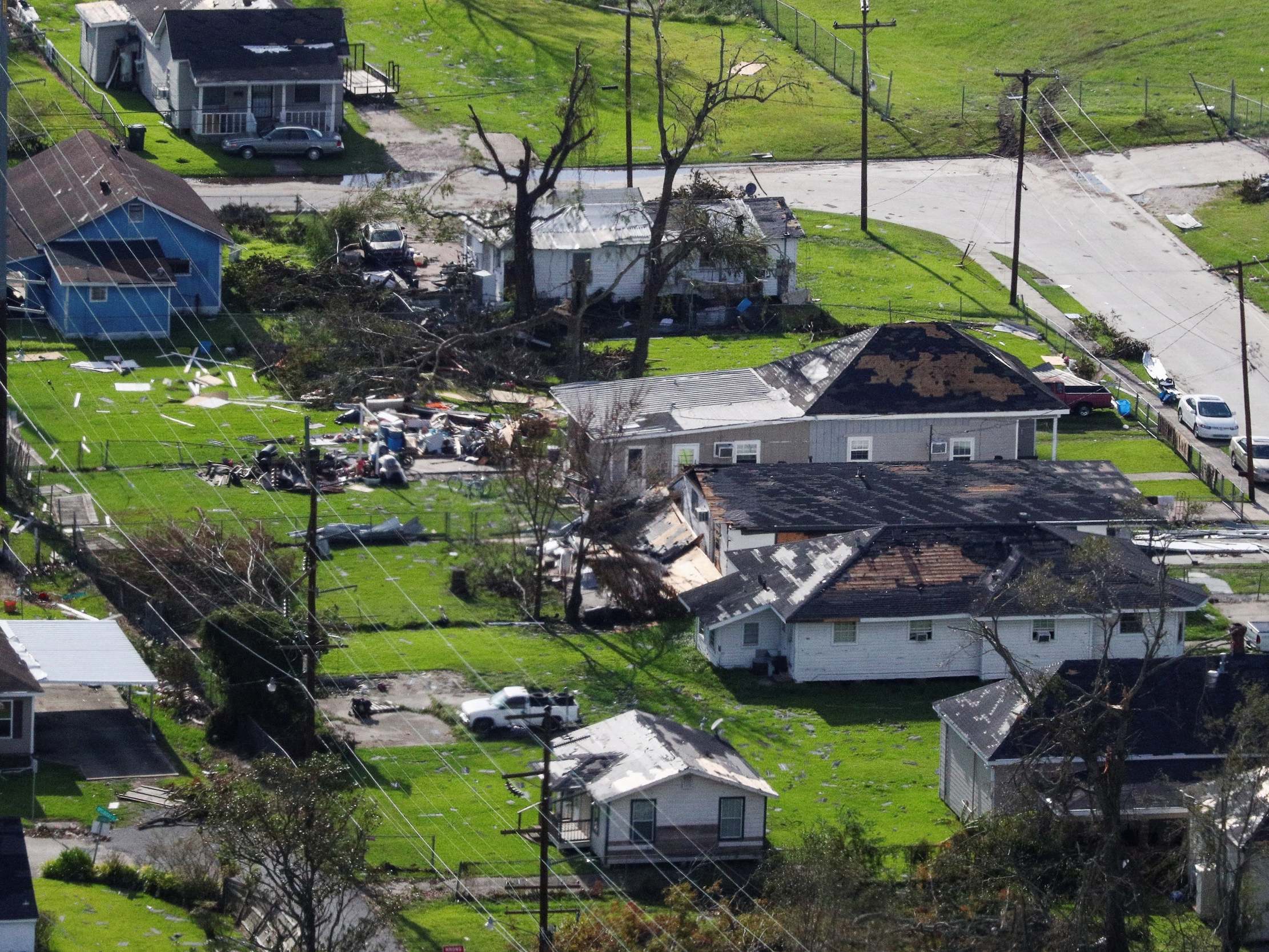
The mass mobilization of resources that often happens in response to a storm like this in more populated areas seems not to have happened here in the same way. The area is even more sparsely populated now, as many more also have decided against coming back. Whoever lived here must have left before the storm, come back to see the devastation, and decided they had had enough.

The house sat six to seven feet above the road, which itself was about the same height above sea level. It was filled with reeds from the marshes to the south. The first sign of what had taken place came as I passed a now-abandoned house that had been swamped by storm surge and was heavily damaged. I knew this would take me through the hardest hit areas of Cameron Parish, but having never witnessed hurricane damage it was still shocking to see the extent of the destruction and how much of it was still exactly as it would have been the day after Laura hit. I drove in from the east, along highway 82, the closest road to the Gulf. Trailers everywhere as the people who live here contemplate whether to rebuild. Rows of bent fence posts, mangled by the relentless push of water coming from the Gulf. Reeds and marsh-grass still draped high up in trees, a testament to the height the waters reached. Cement slabs reminding you of where homes once stood. Laura killed 42 people and did $20.3 billion in damage, making it the 14 th most expensive hurricane in history.

Hurricane Laura made landfall in western Louisiana on August 27, 2020, as a category 4 storm with 150 mph winds – tied as the strongest landfalling hurricane in Louisiana history, and tied as the fifth-strongest hurricane on record to make a continental U.S. I had come down from Canada to start a two-month storm chasing-focused road trip and didn’t really know what I’d find 18 months after Laura had hit. That storm surge swept inland over sparse but still populated bayous and marshland of southern Louisiana, taking out homes, businesses, infrastructure and cemeteries. It’s rather surreal to be camped out on the shores of the Gulf of Mexico, in Cameron Parish, knowing how a year and a half ago the ocean rose approximately 18 feet under the power of Hurricane Laura. Source: Satellite image ©2020 Maxar Technologies Damaged homes at flounder drive lake Charles after hurricane.This first-person report is written by Charlie Randall, who took all photos while storm-chasing in Cameron Parish, Louisiana. Satellite image ©2020 Maxar Technologies Closeup of lake Charles regional airport after hurricane. Source: Satellite image ©2020 Maxar Technologies Coastline and flooded fields in Cameron Louisiana after hurricane. Images collected by Maxar show the effects of the storm and the damage caused by the Hurricane. The ferocious wind, torrential rains and rising seawater as the Hurricane rapidly moved through Cameron and Lake Charles, Louisiana, caused immense damage to homes, buildings and infrastructure. Hurricane Laura struck Louisiana at around 1 am, leaving widespread destruction across the state.Īs a category 4 storm, Laura was life-threatening. saw one of the most powerful storms in its history. To add to the woes, on August 27, Thursday, U.S. While the world is still grappling with the evils of the pandemic, California and nearby areas are in blazes. The nature seems to be in some kind of tussle with the mankind.


 0 kommentar(er)
0 kommentar(er)
